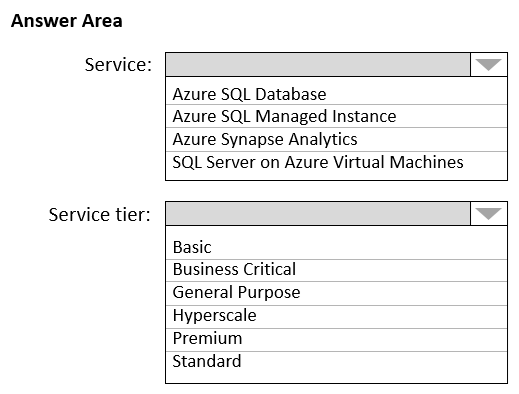Box 1: Azure SQL Database -
Azure SQL Database:
Database size always depends on the underlying service tiers (e.g. Basic, Business Critical, Hyperscale).
It supports databases of up to 100 TB with Hyperscale service tier model.
Active geo-replication is a feature that lets you to create a continuously synchronized readable secondary database for a primary database. The readable secondary database may be in the same Azure region as the primary, or, more commonly, in a different region. This kind of readable secondary databases are also known as geo-secondaries, or geo-replicas.
Azure SQL Database and SQL Managed Instance enable you to dynamically add more resources to your database with minimal downtime.
Box 2: Hyperscale -
Incorrect Answers:
- SQL Server on Azure VM: geo-replication not supported.
- Azure Synapse Analytics is not optimized for online transaction processing (OLTP).
- Azure SQL Managed Instance max database size is up to currently available instance size (depending on the number of vCores).
Max instance storage size (reserved) - 2 TB for 4 vCores
- 8 TB for 8 vCores
- 16 TB for other sizes
Reference:
https://docs.microsoft.com/en-us/azure/azure-sql/database/active-geo-replication-overview
https://medium.com/awesome-azure/azure-difference-between-azure-sql-database-and-sql-server-on-vm-comparison-azure-sql-vs-sql-server-vm-cf02578a1188
